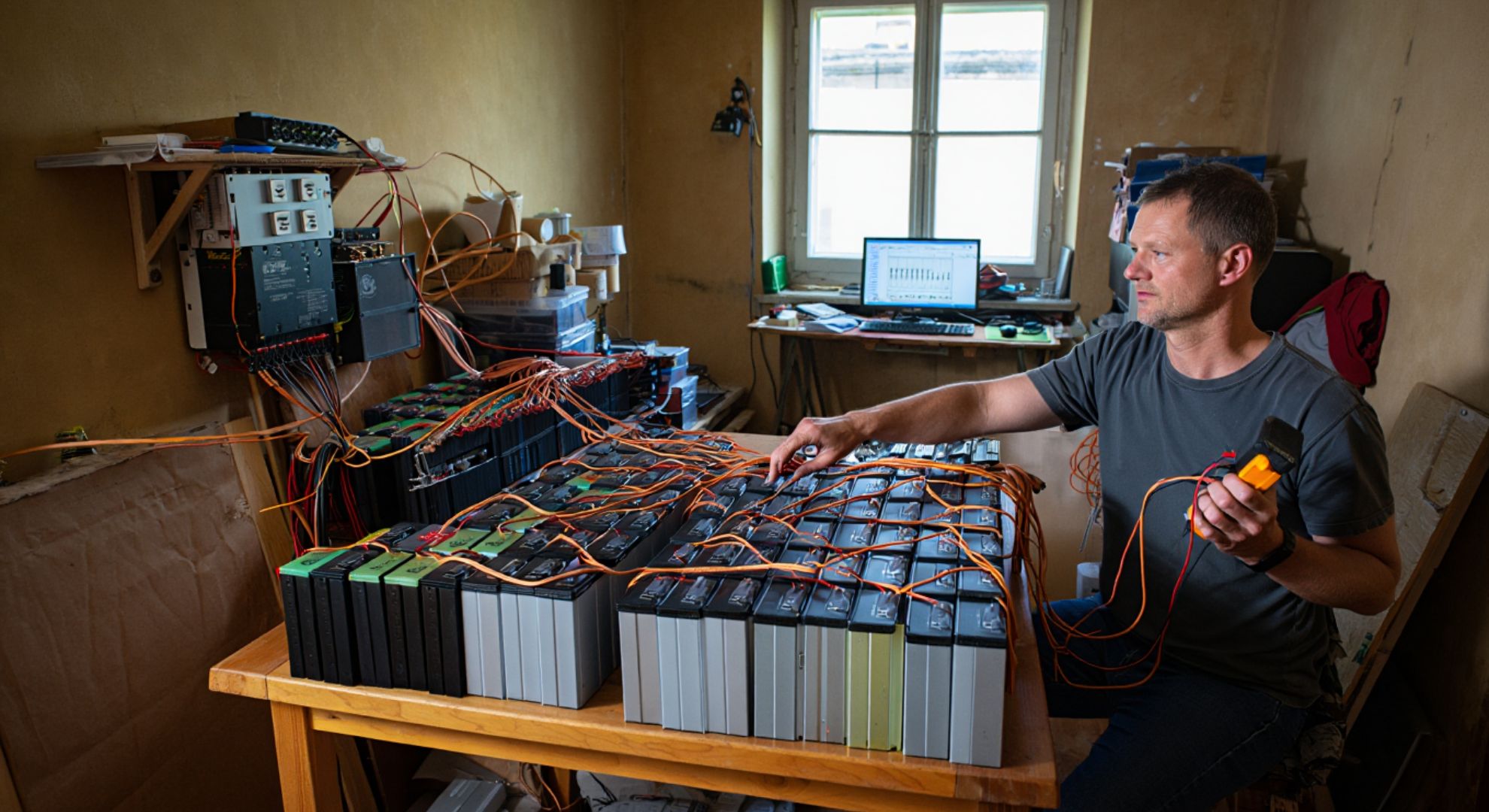When you think about powering a home, laptop batteries usually aren’t the first thing that comes to mind. But for one resourceful innovator, a houseful of used batteries became the foundation for an energy solution that has been running without a hitch since 2016.
The Spark Behind the Project
In a world where energy independence is often reserved for those with deep pockets or rural retreats, few people imagine everyday electronics as building blocks for their own home grid. But that’s exactly what pushed James Harrison, a self-taught engineer, to experiment. Amid rising electricity costs and global conversations about renewable energy, James saw an opportunity:
“Every old device today contains a battery with years of life left—most end up in landfills, not homes,” he says.
With that in mind, he began collecting hundreds of discarded laptop batteries from local repair shops, e-waste outlets, and even friends. He was often met with skepticism, but his vision was clear—if each battery could be tested, repacked, and connected safely, a fully functional home power system might emerge.
Engineering a DIY Powerwall
While commercial solutions like Tesla’s Powerwall dominate headlines, James pursued a radically different approach rooted in upcycling. Each battery pack he salvaged was tested using custom-built measurement rigs to select only healthy cells. Those that passed were grouped, spot-welded, and wired into large modular banks.
The next step involved connecting these banks to a central battery management system (BMS)—a crucial device used to monitor voltage, temperature, and charging states. This allowed for real-time oversight and safety shut-offs. Combined with inverters and a solar charge controller, the array could effortlessly power everything from lighting to home appliances.
As James puts it:
“Once you see your lights switch on, knowing they’re running on what used to be electronic trash, it changes your perspective forever.”
How Does It Compare? Laptop Batteries vs Conventional Systems
Here’s a look at how this setup stacks up next to common residential power storage options:
| Feature | 650 Laptop Battery System | Lead Acid Batteries | Tesla Powerwall |
|---|---|---|---|
| Initial Cost | Very Low (mostly recycled) | Medium | High |
| Lifespan | 5–8 years* | 3–5 years | 10+ years |
| Capacity (average home) | 10–15 kWh | 10–12 kWh | 13.5 kWh |
| Efficiency | 85–90% | 70–80% | 90%+ |
| Upgradability | Easy (add more cells) | Difficult | Limited |
| Environmental Impact | Positive (upcycling) | Negative (lead waste) | Mixed |
*Lifespan depends on cell quality and usage patterns.
From Skeptics to Supporters
While the project’s overt sustainability is hard to overlook, the road wasn’t always smooth. Early on, engineers and electricians questioned whether such a collection of cells could work together safely over the long term. After all, laptop batteries have uneven wear, and mixing them could (in theory) cause dangerous failures.
But the system’s faultless track record since 2016 speaks for itself. Not only has it powered lights, a refrigerator, and a home network without downtime, it’s also caught the attention of local environmental groups. Skeptics turned into supporters when they saw the detailed monitoring in action and reviewed six years of performance logs.
Lessons Learned for Home Tinkerers
James is quick to share the many tricks and pitfalls discovered along the way:
-
- Meticulous sorting pays off: Not all cells are created equal—proper capacity testing is essential.
-
- Overcurrent protection must be built in at every stage.
-
- Documentation of each pack’s origin and specs helps in troubleshooting if a single cell fails
For those considering a similar project, he emphasizes patience:
“If you rush, you risk safety or reliability. This isn’t just DIY—it’s about creating something that really works, for years.”
A Different Blueprint for Energy Independence
In the end, the real story is how innovation meets necessity. James’s setup doesn’t just run his home—it rewrites what’s possible for people everywhere who are surrounded by unused tech. His modular battery wall has become a local legend, sparking workshops and YouTube tutorials for curious homeowners and sustainability advocates.
And while many dream of solar panels and off-the-shelf batteries, there’s now a thriving community experimenting with what they already have, inspired by a single house that’s quietly running on hundreds of laptop batteries—for years and counting.
